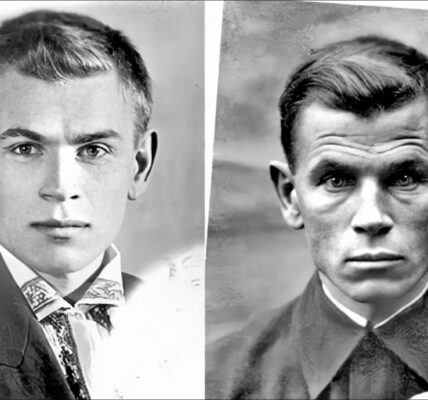When preparing his strategy for the Ardennes counteroffensive in late 1944, Adolf Hitler believed that capturing at least one intact bridge over the Meuse River was crucial. His broader objective was ambitious: to split the American and British forces, cross the Meuse, and advance all the way to Antwerp. Speed, therefore, was essential. Any delay at the river would allow Allied forces to regroup and fortify positions west of it, effectively stopping the German advance.
To support this goal, Hitler assigned SS-Obersturmbannführer Otto Skorzeny a special mission, known as Operation Greif. The plan involved sending German commandos behind Allied lines disguised as American soldiers in order to capture key bridges, create confusion, and disrupt communications.
Skorzeny and His Unusual Mission
Skorzeny had already earned Hitler’s trust through previous operations, including the dramatic rescue of Italian dictator Benito Mussolini in 1943. In October 1944, Hitler summoned him and personally explained the new task: to form, equip, and train a special unit that would operate alongside the Sixth Panzer Army, the spearhead of the northern attack in the Ardennes.
Skorzeny was ordered to:
-
Help capture an intact Meuse bridge
-
Carry out sabotage and disruption behind Allied lines
-
Spread confusion through deception and misinformation
The key to the plan was psychological and tactical deception: German soldiers would dress in American uniforms, use captured Allied vehicles, and speak English to pass through checkpoints and redirect Allied movements.
The Challenges of Preparation
Skorzeny established his base at Grafenwöhr, but he had only six weeks to prepare — far too little time for such a complex mission. Although Hitler promised unlimited support, the reality was different. The German military was already stretched thin.
Instead of the large supply of captured American equipment he had requested, Skorzeny received only:
-
A limited number of jeeps and trucks
-
One Sherman tank
-
Some half-tracks
To compensate, he disguised around 70 German tanks to resemble American M10 tank destroyers, creating visual confusion on the battlefield.
Another major issue was manpower. When Field Marshal Wilhelm Keitel issued an open call for English-speaking soldiers across the Wehrmacht, about 2,000 volunteered. However, only around 10 men were fluent, and only a few dozen had enough English skills for basic communication. These men formed a small reconnaissance unit called the Stielau detachment, made up of teams of two to six soldiers.
Rumors and Psychological Impact
During training, rumors began circulating that Skorzeny’s men were also assigned to assassinate General Dwight D. Eisenhower. Although Skorzeny denied and tried to suppress these claims, the rumors quickly spread — and Allied intelligence soon picked them up.
Ironically, this misinformation became one of Operation Greif’s most effective outcomes.
When the German offensive began on December 16, 1944, reports of German commandos in American uniforms caused widespread alarm.
Some captured infiltrators even claimed that assassination units were targeting top Allied commanders.
As a result:
-
Eisenhower and General Omar Bradley limited their movements for safety reasons
-
Allied headquarters increased security measures
-
Communication and coordination were temporarily slowed
Even though the assassination threat was largely exaggerated, the psychological effect on the Allied command structure was real.
Limited Success and Operational Failure
Skorzeny’s wider plan relied on Panzerbrigade 150 breaking through American lines quickly. However, strong Allied resistance halted the offensive earlier than expected.
By the second day of the fighting, Skorzeny realized that his deception strategy had failed and ordered his unit to operate as a conventional armored formation under the 1st SS Panzer Corps.
His own role in the operation ended when he was injured by artillery fire near Ligneuville, Belgium.
Meanwhile, most of his commando teams were captured or killed. Only one team managed to return to German lines.
Trials and Executions of Captured Commandos
Several captured members of the Stielau unit were tried by American military tribunals.
On December 21, 1944, three commandos — Günther Billing, Wilhelm Schmidt, and Manfred Pernass — were convicted of:
-
Violating the laws of war by wearing enemy uniforms in combat zones
-
Espionage
They were sentenced to death and executed by firing squad on December 23, 1944.
Skorzeny After the War
Skorzeny surrendered in 1945 and spent two years in detention before being tried at Dachau in 1947.
In contrast to his subordinated commandos, Skorzeny was acquitted. His defense argued that his men were instructed to remove American uniforms before engaging in combat — a key distinction in international law.
A British intelligence officer, Forest Yeo-Thomas, testified that Allied forces had also used enemy disguises in certain operations, which helped strengthen Skorzeny’s defense.
After his release, Skorzeny:
-
Escaped detention in 1948
-
Lived in Spain and later Argentina
-
Was allegedly involved in military training in Egypt
-
Was later rumored to have cooperated with Israeli intelligence
These aspects of his life remain controversial and partly disputed.
He died of lung cancer in 1975.
Conclusion: A Controversial Legacy
Operation Greif failed as a military operation, but it remains one of the most famous examples of wartime deception.
Its real impact was psychological: spreading fear, confusion, and paranoia among Allied forces during a critical phase of the Battle of the Bulge.
Otto Skorzeny remains a deeply controversial figure:
-
To some, he was a ruthless SS officer and war criminal.
-
To others, he was an innovative — though morally compromised — military tactician.
His life and actions continue to be studied as an example of how deception, propaganda, and unconventional warfare can influence both battlefields and historical memory.




